Bob and weave.
The advice commonly doled to a boxer could just as easily be assigned to anyone attempting to navigate the Union Square Greenmarket in New York City on a Saturday morning. It’s a labyrinth of tents, a Pac-Man game of people, all clamoring for a look at the day’s offerings. Locals––huffing and head-shaking at lackadaisical tourists––swiftly sidestep, all trying to manage what they might need to simply make dinner.
It’s populated by equal parts people with purpose, and folks just strolling through for a change of scenery. For the former group, the latter can make a fundamental shopping trip into a frustrating to-do. If you’re going in hoping to truly accomplish something on any kind of schedule, you’ve got to develop a system.
José Ramirez-Ruiz and Pam Yung happen to have one. As seasoned veterans of this particular ring, divide-and-conquer is their time-tested strategy. The drill begins with a brief rendezvous. They purchase tokens and––along with Caitlin Head, who is the singular additional cook at their restaurant, Semilla–– have an abbreviated huddle. Funds are allocated, a few words exchanged, and then they split up to hit the stalls, each with a set of designated targets.
This is a twice weekly routine for the team, whose Brooklyn-based restaurant will be the destination for their market finds. They’re well-practiced pros. On this particular morning they’ve invited me to follow along, and I’m just trying to keep pace.
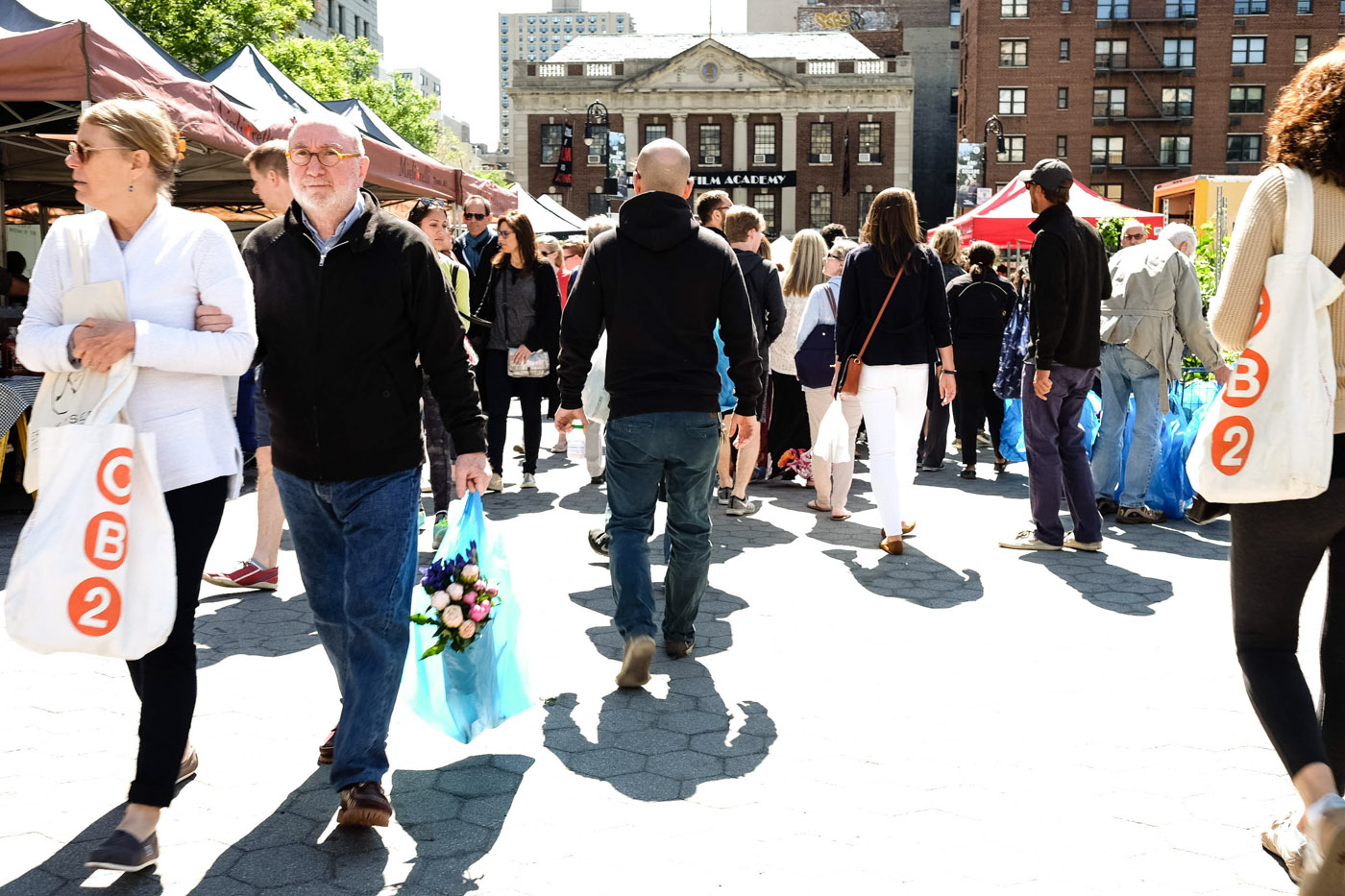
I track Ramirez-Ruiz first; he’s an agile market-goer and makes quick work of picking up his initial marks. I think I’m doing a pretty good job of staying on task until I make a rookie mistake: allowing myself to indulge in a sensory siren song, one calling to me from a technicolor selection of heirloom tomatoes.
And just like that, I’m scrambling. Trying to fall back in line, clumsily circumventing strollers, ducking under greenery and wedging myself between shoppers, eyes darting in every direction. I quit fighting a subconscious desire to hit the mental play button on the James Bond theme song, and am thoroughly ensconced in my own personal action movie by the time I finally spot Ramirez-Ruiz’s black hooded sweatshirt from the back. He’s conversing with a vegetable vendor at least 50 yards from me.
Though he’s in sight, the chef will still be difficult to reach thanks to a consternating, undulating crowd. Instead, I spot Yung at a vendor nearby and casually sidle up next to her, as if it was my plan all along.
“They have the most incredible dairy products here,” she says, unfazed, pointing out drinkable yogurts the farmer has arranged in little jugs on ice. “Two of these, too,” she says, taking one for herself and gifting the other to me––much appreciated nourishment for this novice. “These are so delicious,” she says, and she’s totally right. The blueberry drink is a tangy, grassy and fresh––a perfect portable breakfast that keeps well as we press on.
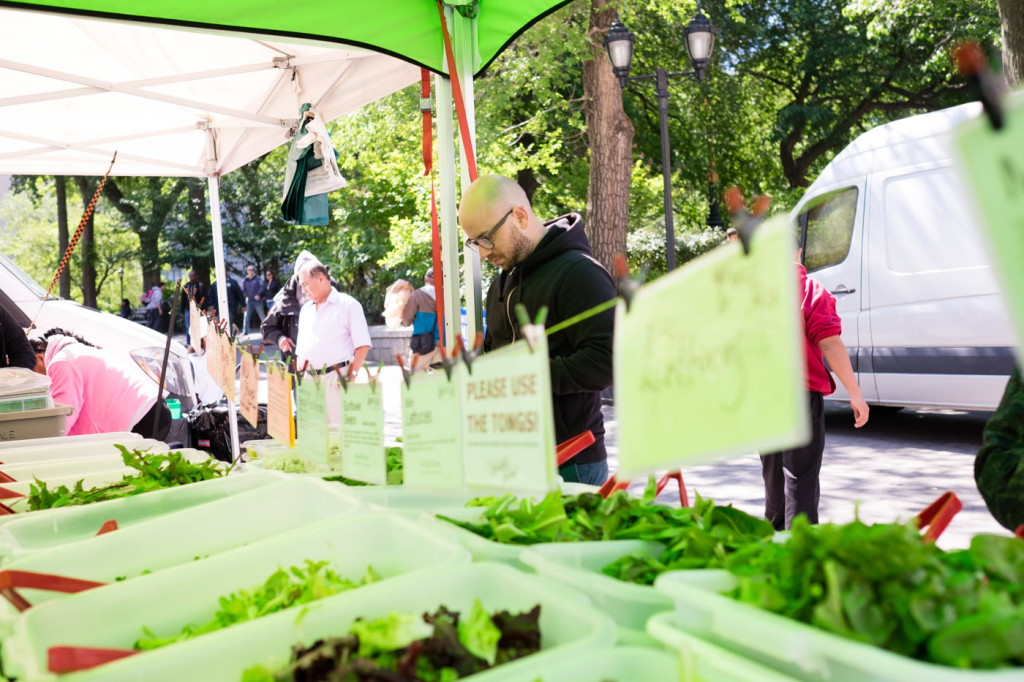
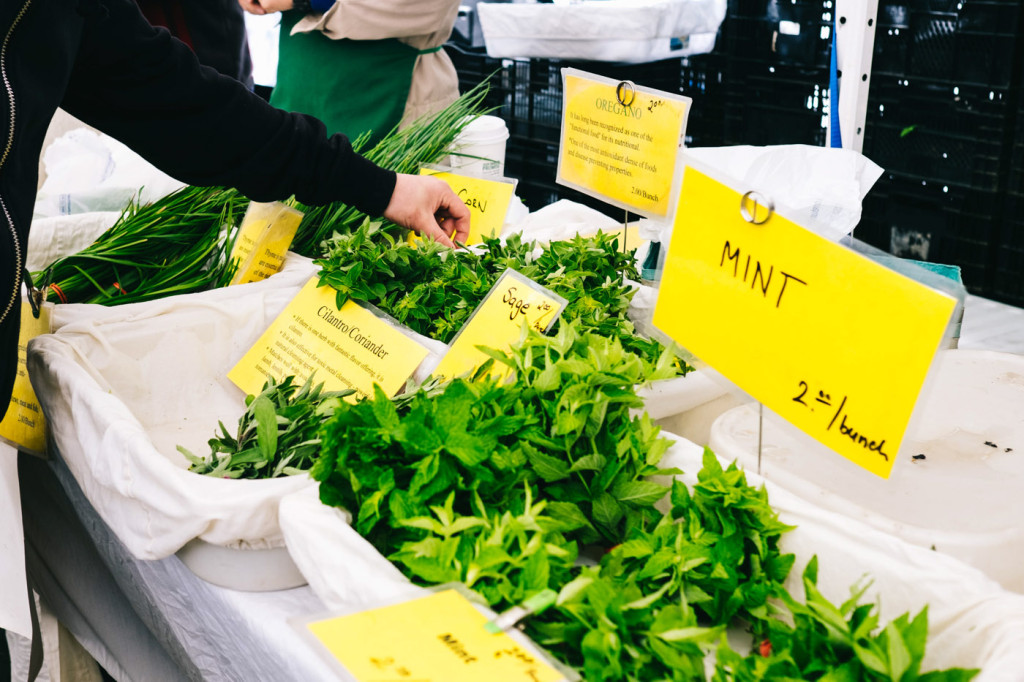
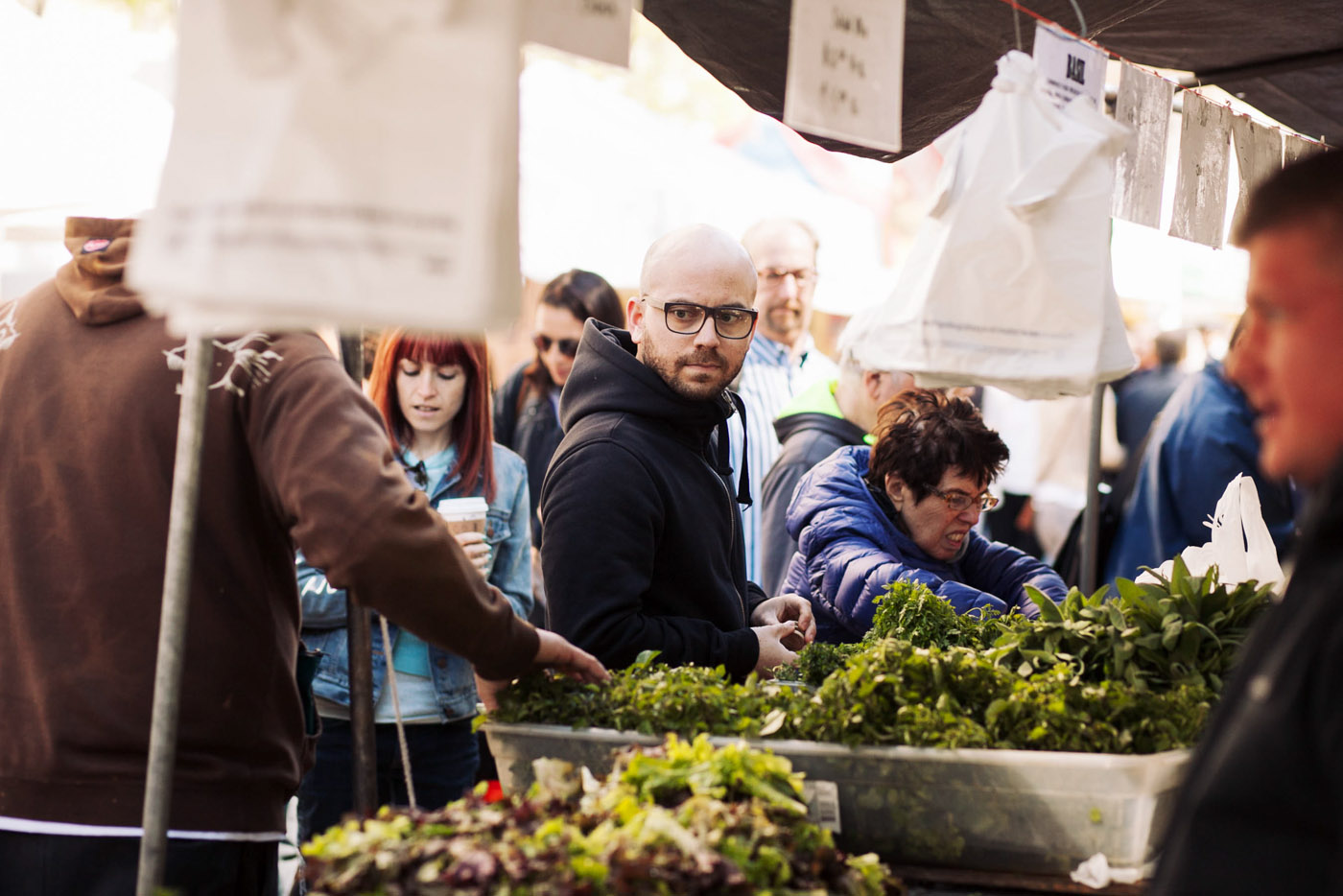
Yung is a partner and is in charge of––among other things––baking and pastry at Semilla. In researching the restaurant, perhaps the most Instagrammed item I’ve seen is a loaf of house-baked bread served with a sidecar of buttermilk. We rarely stop moving, but Yung never misses a beat in answering my blitz of geeky bread questions.
“Right now we’re just doing one bread, given our space and equipment,” Yung explains. “Primarily, that’s what we’re known for––the sourdough. It’s a pretty lengthy process, and oven time is an issue, ” she continues. “But I get to play with a lot of really cool grains. Whatever whole grains or seeds we can get, I mill in-house.”
Watching them so zealously select produce, I’m curious to know which comes first, the ingredient or the idea. “Definitely ingredients,” Yung replies. “Always. Beautiful product is an inspiration.”
Over rubber-banded bundles of Japanese Knotweed, we run into chef friends of Yung’s from other New York restaurants––ones with equally formidable reputations. It’s a secret society of the city’s best cooks out in plain sight, at ease in their natural habitat among the leafy greens and recently foraged herbs.
I wait while Yung pays for a parcel of sorrel. “It’s one of my favorite greens,” the vendor tells her, and she goes on to explain her intentions for the purchase on tonight’s menu––a sorrel sorbet with mandarin orange curd and Seville orange granite. The farmer’s expression is a legible indication of his excitement, an obvious pride that his product is going to star in such an impressive offering.
In all the “farm-to-table” meals, all the market-driven fare I’ve been served, this is perhaps the first time that it strikes me: while chefs are increasingly being awarded due credit, rarely do farmers have the opportunity to follow their harvest to its various ends––be it a family’s dinner table or fine-dining restaurant. Instead, most often they send their children off to school without ever knowing what they’ll be when they grow up. In describing her dessert, Yung invites him to share in the satisfaction, to sit in on the school play and to be privy to that sense of pride. In some form, by way of this exchange, I’m watching the two build something together––and Yung is expressly grateful for the farmer’s contribution to her dish.
But before long, the moment is over and we’re off again. Another tent, another bundle of greens. This time, nettles. “Every Saturday we make pizza for staff meal,” Yung tells me, paying for the herbs. “It’s a long-fermentation dough. I had the opportunity to stage at Bonci in Rome––it’s a really famous pizza place,” she continues. “I’ve been obsessed with trying to perfect it, but I’m not there yet.” Today’s attempt at perfection? Nettle pizza.
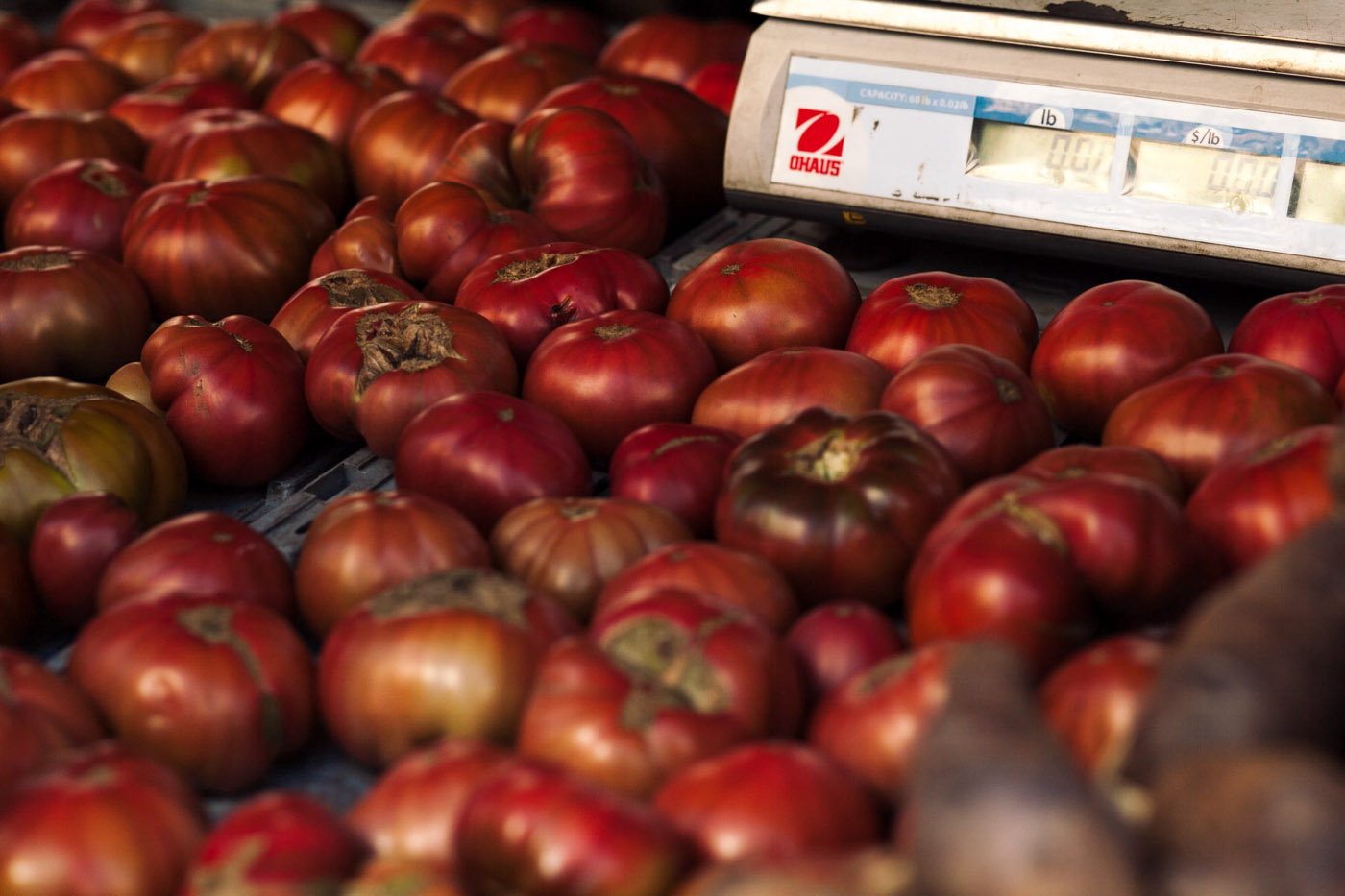
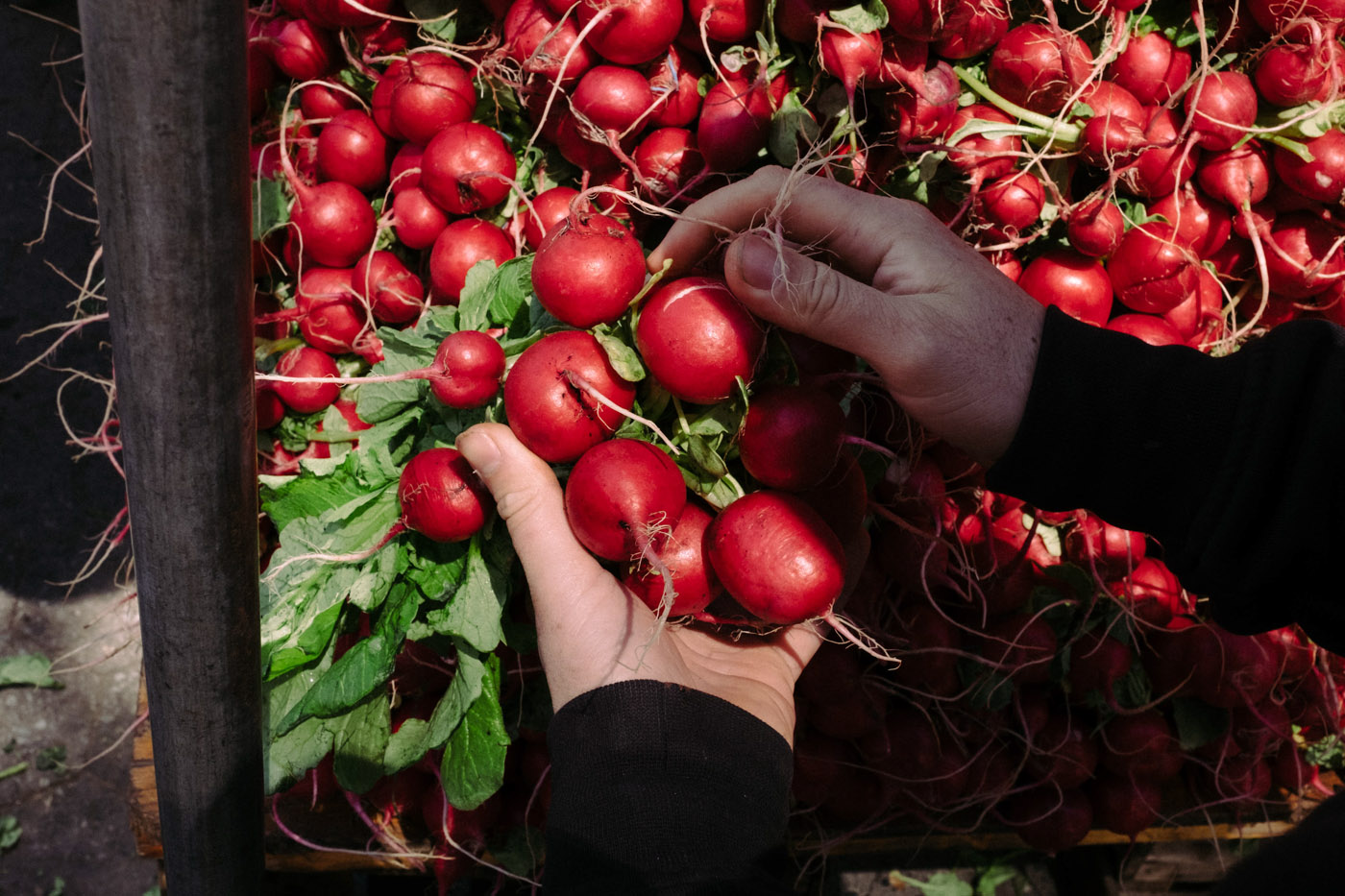
We finally reconnect with Ramirez-Ruiz. I swap one chef for another and trail him to a shaded, adjacent stall, where I listen as he and the farmer converse rapidly in Spanish. From the tone of it, he’s getting some bad news.
“The downside is that you come here expecting a product and it’s finished. It means I need to come up with something else,” Ramirez-Ruiz says of the pitfalls related to a market-driven menu. “But we’re so small that we’re very adaptable. If it was a restaurant with 20 or 30 cooks, it’d be a big problem. “
Ramirez-Ruiz and Yung each have a culinary curriculum vitae that no doubt helped them learn to think on their feet. Collectively (and sometimes concurrently), they’ve worked in kitchens around the world, most recently operating Chez José together––the pop-up prelude to Semilla. The idea for Chez José came to Ramirez-Ruiz while working at Thomas Keller’s New York institution, Per Se.
“I was at Per Se, and I used to call Chez José, ‘The Imaginary Restaurant of the Future.’ When I disagreed with the chefs––when they would say, ‘José, blanch the asparagus for seven minutes,’ I would say, ‘Okay, no problem chef, but at Chez José, we’re only going to blanch it for two.’ Then I would go on working,” Ramirez-Ruiz laughs. “It was my way of being a smart ass without getting yelled at. It was the first time I thought that when I open a restaurant, 80-percent of my menu is going to be vegetables. I just enjoy them, you know?”
Vegetable-driven. Plant-forward. So many buzzwords and catchphrases have been assigned to Semilla’s cuisine—attempts to sum up their style in social media-friendly soundbites. But to generalize is to minimize the passion and multiple motivators that drive their manner of cooking, and those factors have little to do with amassing critical acclaim (although they have) or owning a rolodex of positive Yelp reviews (although they do).
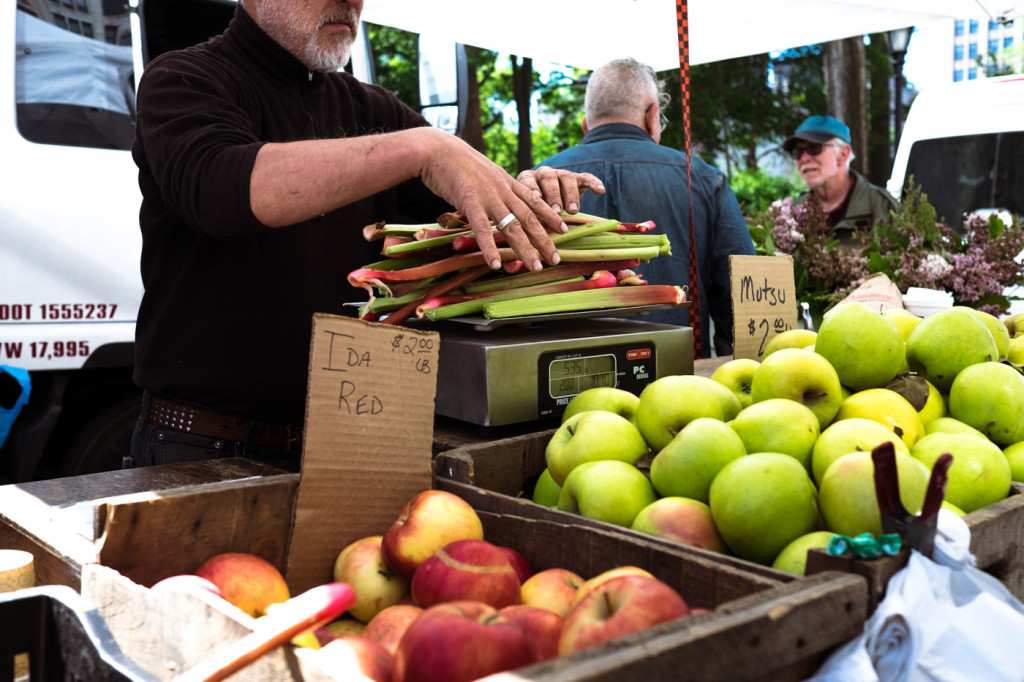

Ramirez-Ruiz notes first the versatility of vegetables. “It’s not just ‘vegetable-forward.’ [What we do] is seed-to-flower.”
Each individual raw material is, Ramirez-Ruiz explains, actually a multitude of usable ingredients. “A perfect example is fennel: you get the root, you get the bulb, you get the inside of the bulb which has a different texture than the outside, you get the stems, the leaves, the green seeds, the dried seeds, the flowers––every single one has a different appearance and texture and flavor,” he says. “And we use different techniques to be able to enhance that product. We experiment a lot.”
The flavor part of the equation is what Ramirez-Ruiz wants guests to focus on, careful to avoid the weedy prospect of becoming pedantic. “I don’t want it to be people coming into the restaurant and me preaching to them; we don’t do that. We serve a vegetable-forward menu. Why? Because I like to cook vegetables,” Ramirez-Ruiz says.
But quietly, he has ulterior motives. “One thing that very few chefs are talking about is the carbon footprint of restaurants. If we continue to go down the same path, the reality is that one, two generations from now, cooks are not going to get a chance to cook with the same ingredients that I’m getting to cook with,” Ramirez-Ruiz explains.
“When you’re getting your steak from Colorado, and your squab from New Zealand, and your duck from Long Island, and your Scottish salmon, and your cod from Sweden––chefs are not talking enough about how much of a carbon footprint comes from putting that on a plate,” Ramirez-Ruiz notes. “The reality is a pound of sirloin has a hell of a lot larger carbon footprint than a pound of carrots. In order for us to guarantee the best quality product, we have to shop local because it has to be fresh. By doing that, we’re not only supporting local farmers and creating relationships with them, we’re also minimizing our carbon footprint.”

The Semilla market trips aren’t simply stroller-dodging expeditions to secure the finest ingredients––although that is very much a positive byproduct for their diners. They’re an active step toward addressing a bigger problem.
“I don’t have the time to protest,” Ramirez-Ruiz says. “But that’s the beautiful thing about our profession as cooks and chefs––we’re protesting every single day that we wake up. Every time I go to the market and I pay $1.25 for a carrot instead of paying 50 cents for a carrot, I protest. Every single day that I come here and I sleep an hour less to shop with these guys that are organic or biodynamic and are doing an amazing job and are providing the best, sickest product available, I’m leading by example and I’m changing things in my own way without having to be preachy.” He counts out a few tokens and hands them to the stand’s farmer, before turning back to me.
“And that’s a long-winded way of answering, ‘Why vegetables?’” He laughs.
Once the list has been checked off (or in some cases, improvised upon), it’s time to call the cars. While the team takes the subway into Manhattan, once they’ve amassed their ingredients post-market, Uber drivers or NYC taxis ferry them back across the East River to their Williamsburg location. As we stand on the curb waiting, Yung and Ramirez-Ruiz lob ideas back and forth based on the day’s loot (“You know what would be cool? Rhubarb soda with black locust syrup.”).
Our respective lifts arrive and we split up yet again, two separate cabs required to accommodate all plants and humans. And while Yung and Ramirez-Ruiz give our car the head start, something tells me we’ll still be hustling to keep up.
—
Read Semilla: Part Two





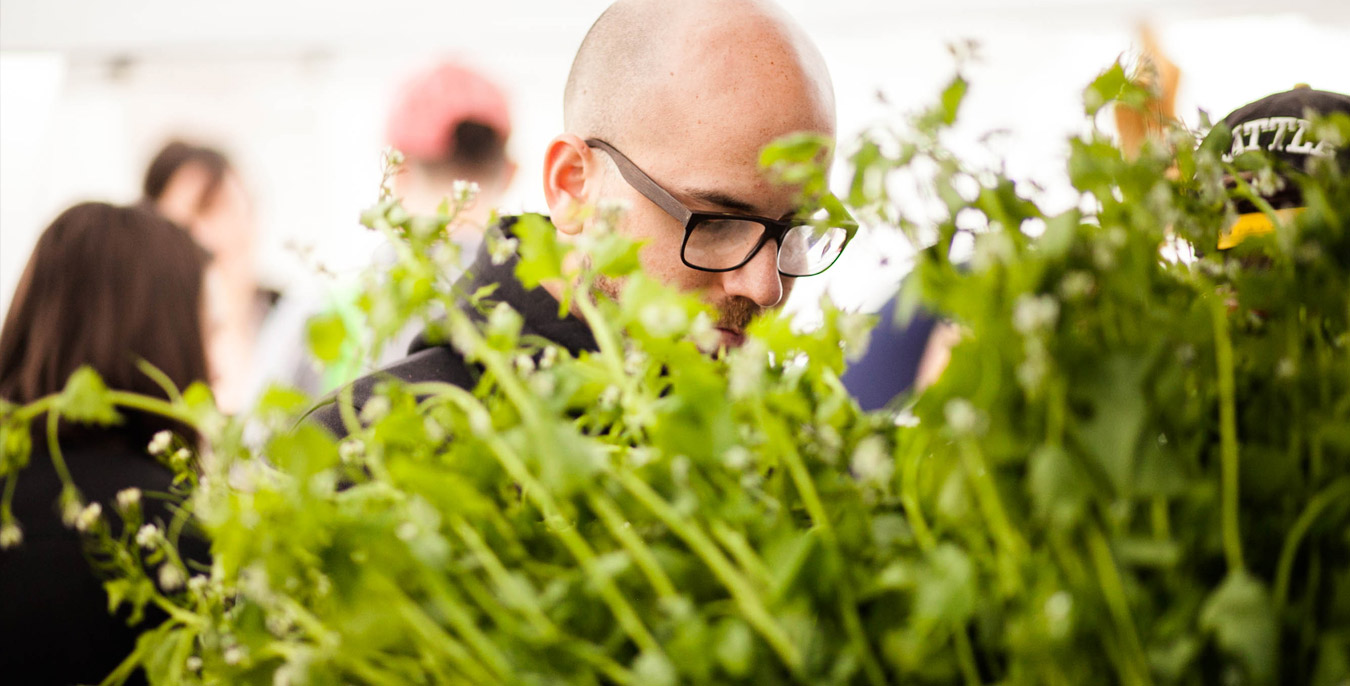

Our comments section is for members only.
Join today to gain exclusive access.